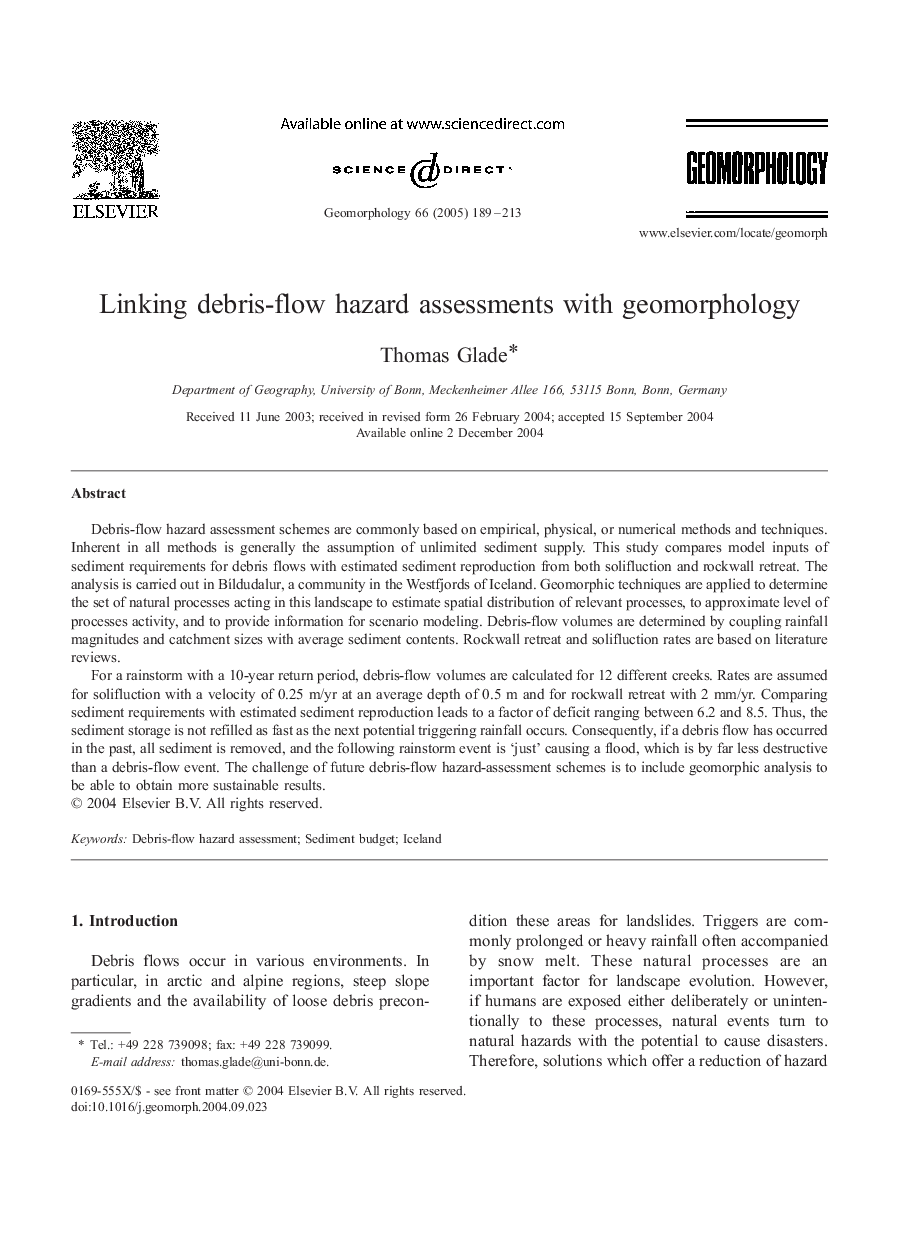| Article ID | Journal | Published Year | Pages | File Type |
|---|---|---|---|---|
| 9524961 | Geomorphology | 2005 | 25 Pages |
Abstract
For a rainstorm with a 10-year return period, debris-flow volumes are calculated for 12 different creeks. Rates are assumed for solifluction with a velocity of 0.25 m/yr at an average depth of 0.5 m and for rockwall retreat with 2 mm/yr. Comparing sediment requirements with estimated sediment reproduction leads to a factor of deficit ranging between 6.2 and 8.5. Thus, the sediment storage is not refilled as fast as the next potential triggering rainfall occurs. Consequently, if a debris flow has occurred in the past, all sediment is removed, and the following rainstorm event is 'just' causing a flood, which is by far less destructive than a debris-flow event. The challenge of future debris-flow hazard-assessment schemes is to include geomorphic analysis to be able to obtain more sustainable results.
Keywords
Related Topics
Physical Sciences and Engineering
Earth and Planetary Sciences
Earth-Surface Processes
Authors
Thomas Glade,
